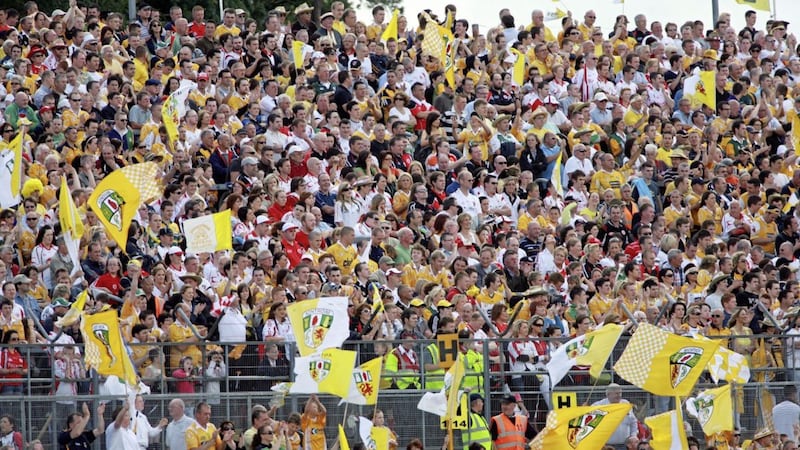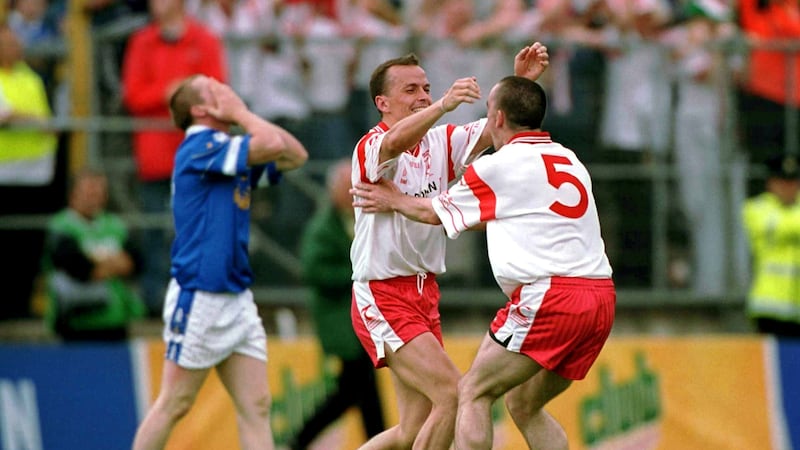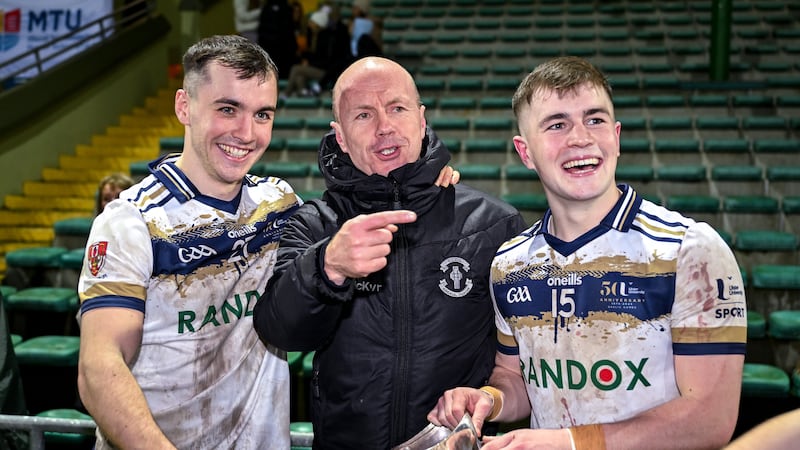OUT of the 21 players that Antrim used in Saturday’s exercise in futility, nine were making their championship debuts.
Another, Patrick Finnegan, didn’t get off the bench. Four more made their debuts in the summer of 2018.
Cargin, winners of three of the last four Antrim football titles, have no representatives on the panel.
While the body was still warm, one of those Erin’s Own men that gave his service before stepping away hit the nail pretty much square on the head.
Michael McCann tweeted: “Unlucky lads, glimpses of some good football, consistency will come from playing at a higher level. On another note, the issue in Antrim is much deeper than Casement, don’t be fooled by the smoke and mirrors. When Casement was flying high there were still huge problems #AntrimGAA”.
The old Casement Park was opened in 1953, hosting the Ulster final in its first year. The last time the showpiece was held in west Belfast was 1971.
In the 42 years that followed, it sporadically hosted big games. Ulster semi-finals tended to top the bill, alongside provincial hurling deciders when it was a competitive spectacle in the early 2000s.
Mostly, though, it was home to Antrim footballers and hurlers, be that in the saffron of their county or the assortment of club colours that paraded through it annually.
For 60 years, Antrim had a home. A fine home, one which boasted a surface that so many of those that played on it would tell you to this day was the best in the land.
From it opened in 1953 until it closed in 2013, the county team played in two Ulster football finals, losing both.
They won four Ulster U21 football titles, the last of them in 1989, more than a decade after their back-to-back successes in 1974 and ’75. There were three provincial minor titles, but none since 1982.
Antrim haven’t won a provincial football title at any grade in 30 years.
Their hurlers’ status was elevated by the antiquated championship system that saw them and Galway effectively granted free passage to an All-Ireland semi-final every summer.
It’s also been 30 years since their All-Ireland hurling decider appearance in ‘89, since when they have come to accept their place in the order of the new world. They now compete with Westmeath and Carlow and Laois.
Not having a home to call their own contributes to all of this, but only in the finer details. In blunt terms, the lack of a Casement Park is the difference between the footballers being at the top of Division Four and being at the bottom of Division Three, or the hurlers winning a Joe McDonagh and not winning one.
Having the provincial stadium on their doorstep would be the equivalent of a month’s worth of EPO. It will drive them up the hill in front of them, but for each one they conquer, there’s another, far bigger one on the far side.
Does anyone genuinely believe that the young Gaels of Belfast will be flocking in their thousands to watch Tyrone and Monaghan play in an Ulster final? Novelty is a short-lived affair.
(As an aside, will Ulster Council set aside, say, a few thousand tickets for an Ulster final to give out free to the schools around the city if its capacity is limited to 34,000, out of which you have to take your premium seats? That will be the true test of their long-term commitment to the Belfast project.)
The engagement that the GAA craves from the children of Belfast will not come from hosting Ulster finals on their doorstep. It will, as we’ve seen already, come from Antrim playing in Ulster finals.
Who could forget the sea of yellow that engulfed Clones for the Ulster final in 2009? Buses and cars going from houses that in other years would barely have known Antrim were playing.
That carried on into the following year. Having topped Division Three they met Tyrone again in the Ulster quarter-final. It was the highest attended game in Ulster that year outside the final, attracting an unseasonably high 18,159.
By the time the venue’s last championship game was played three years later, there were just 7,713 in the ground to see them flatline against Monaghan. The fizz was long gone from the bottle, and the level of interest from the public was back where it had been.
Antrim needs a stadium. Belfast needs a stadium. There are the obvious social and economic benefits to the area.
But no matter how grand it might be, it is not going to solve any of Antrim’s deeper-rooted issues.
The idea that it will borders on delusion.
Just go back to that number of debutants on Saturday. In essence, that’s no different from last year, or the year before, or the year before that.
They have, over the past three years, produced decent minor football teams. Harnessed right over the next five years, they have a chance to build a side that could step into Division Three and solidify their position. To be the first building block.
The absolute lack of continuity in personnel from one year to the next predates Lenny Harbinson by a long way, but stemming it has to become the absolute pre-requisite of the job.
That means convincing the best current players at senior level playing for the county, and building the team around them.
Because with a participation rate of 6 per cent in Belfast’s primary schools, Antrim does not and will not have the resources for the next decade to significantly improve their standing in either code.
And unless results improve in the short-term, then the cycle will be self-repeating in the long-term.
This is not Dublin. It’s not a county with a history and tradition of provincial and All-Ireland successes. The base from which Antrim are building is so much lower.
By its definition, that means it requires an even greater level of investment and elbow grease.
Antrim county board have taken the GAA’s £1m for Gaelfast and added to it by funding an extra three Games Development Officers out of their own finances.
They’ve struck a deal to work out of St Mary’s University, where they will get access to the next generation of young men and women that will be teaching in the county’s schools.
The previous county executive, headed by Collie Donnelly, did great work from the financial end. Valuable initiatives such as the Saffron Business Forum were struck up, and have continued under Ciaran McCavana. Almost 600 people attended last week’s lunch, raising a small fortune for the county.
In that regard, they are putting other counties around them to shame.
Those are proper working examples of how they can positively affect the future performance of their adult county teams.
Casement Park will not drag the county from the doldrums.
Belfast’s young citizens need more than for Ulster finals to be played in the west.
They need Antrim to be playing in them.
Simply building Casement Park won't make it happen.








